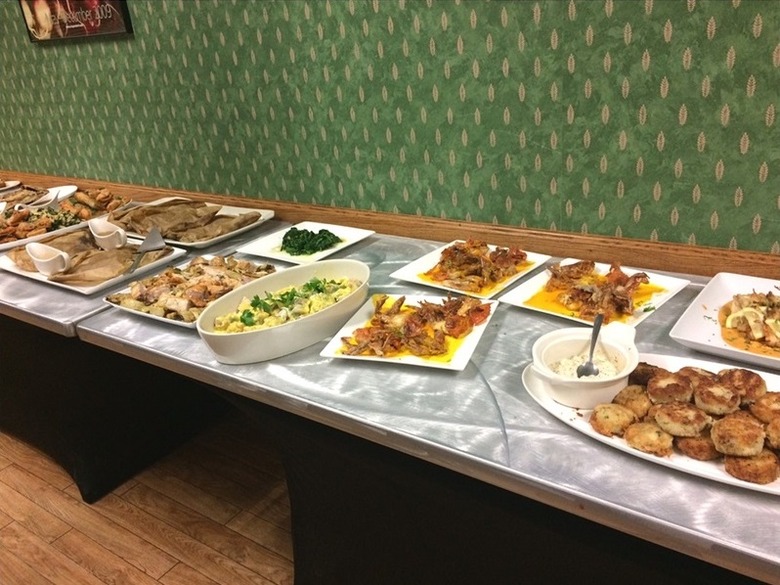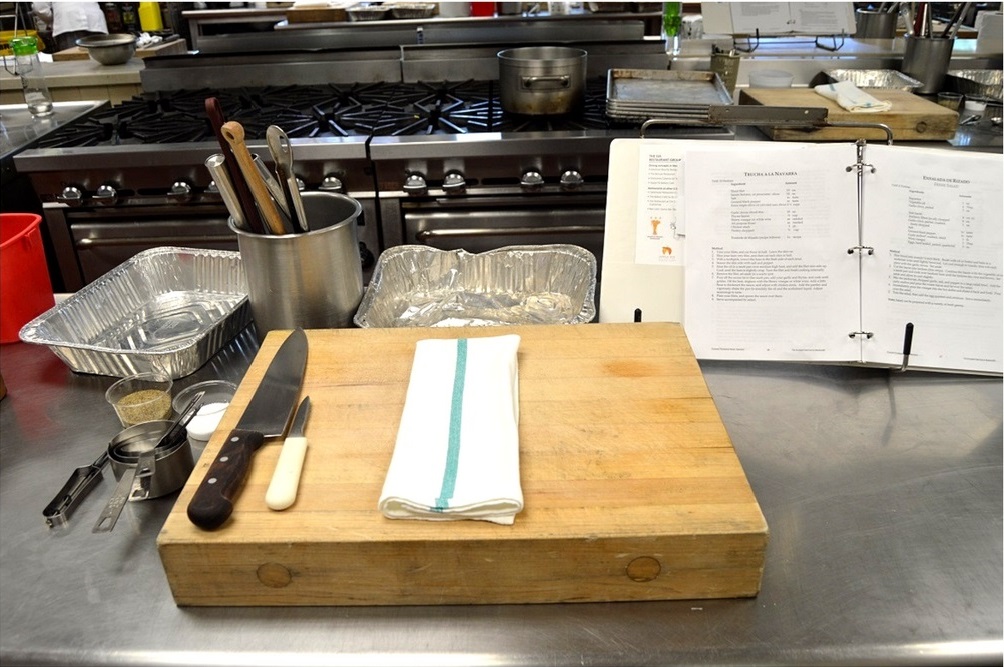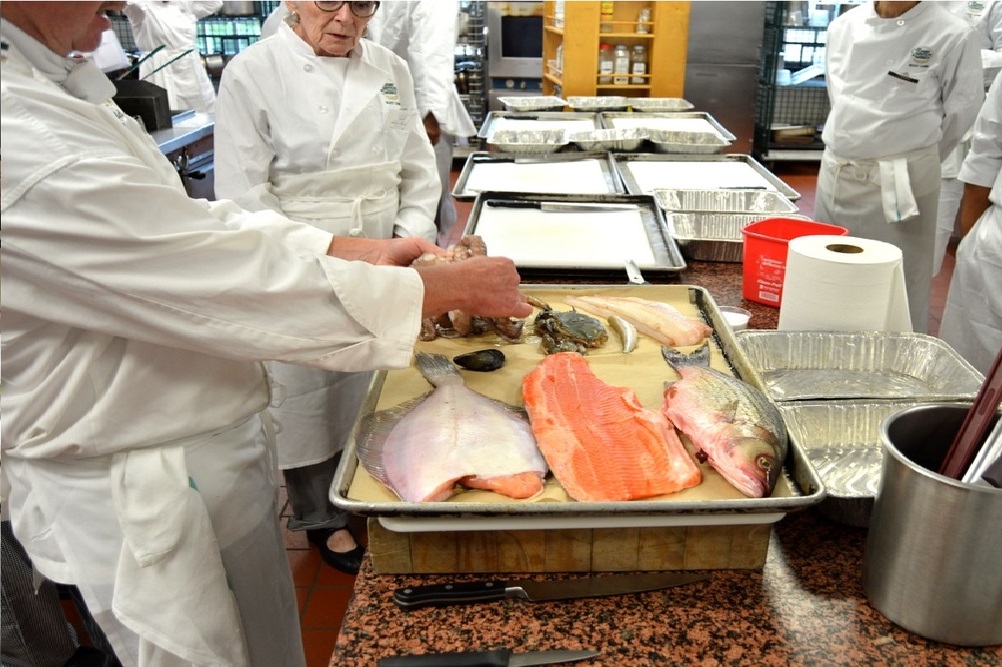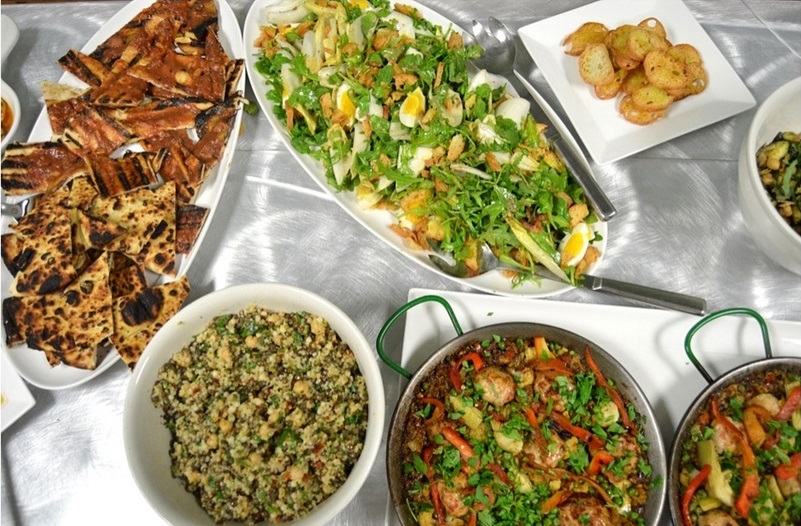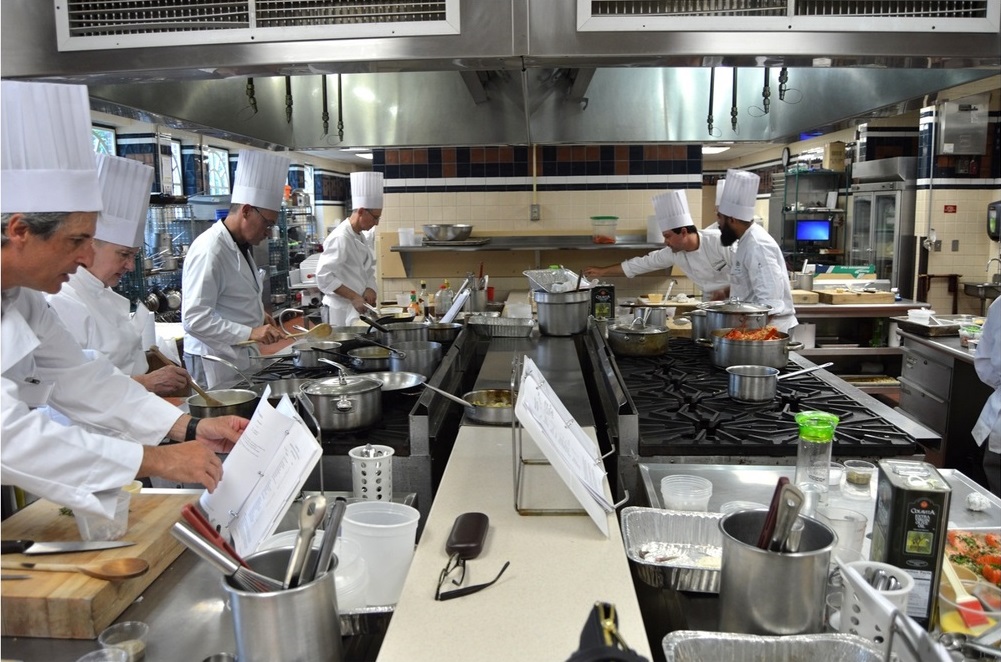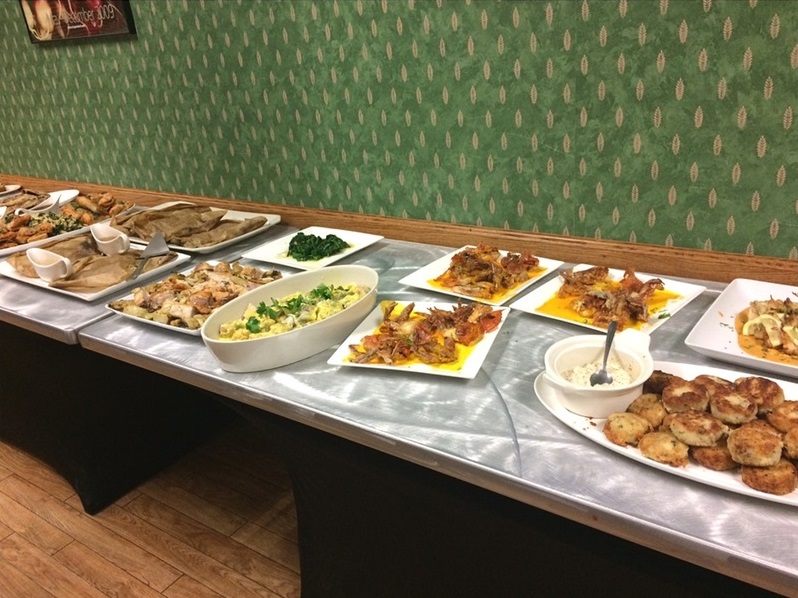I Went To A CIA Boot Camp To Learn How To Cook Fish
The Culinary Institute of America (CIA) in Hyde Park, New York, is one of the nation's most acclaimed culinary schools. Many now-famous names — Anthony Bourdain, Charlie Palmer, Cat Cora, Duff Goldman, Michael Symon, and Grant Achatz, to name a few — have emerged as young hopefuls from the school and gone on to find great success.
Because of this pedigree, I jumped at the chance to attend the school for a two-day culinary "boot camp" class specializing in seafood. (Two other lucky students won their spots in a contest sponsored by Voss water in conjunction with The Daily Meal.)
The boot camp was part of the institute's series of Food Enthusiast Programs, which offer aspiring cooks a chance to learn from the college's vast expertise without pursuing a professional degree. Boot camps are offered at the CIA's New York, California, and Texas campuses and range from two to five days in length. They cover an array of subjects — basic cooking techniques, farm to table practices, pastry baking, and more — with new topics added periodically and "best of boot camp" classes also available.
Before I was the Cook editor here at The Daily Meal, I worked in professional kitchens for almost 10 years; from garde manger to hot apps, pasta, and roast, I worked my way up station by station as a line cook and sous chef before jumping to the world of food writing. In all my years of cooking professionally, though, I have never actually attended culinary school or a cooking class of any kind. As I arrived at CIA's Hyde Park campus, I had no idea what to expect.
After a pleasant train journey along the Hudson River, my fellow students and I were warmly greeted by Lorrie Gierloff, manager of CIA's Food Enthusiast Programs, who remained with the group through the entire course, helping us with any non-culinary question we had.
Lorrie led us into a classroom where we were given chefs' coats and checkered pants, a folded toque, neckerchief, a health code-compliant CIA water bottle, a CIA pen, and a CIA binder full of the recipes to be prepped, cooked, and plated over the next 40 hours. After changing into our uniforms, we met our chef instructor, David Bruno. After brief introductions and a 25-minute PowerPoint presentation about different cooking techniques, the class split into four groups and headed to the kitchen.
Our mise en place had already been set up for us: cutting board, chef's knife, paring knife, side towel, and more, ready to be put to use. From this point in the class the students were left surprisingly to their own devices; Chef Bruno demoed the different techniques for breaking down fish, killing live lobsters and skinning a side of salmon, but throughout the class, students were expected to perform tasks basically on their own, which left some students feeling a bit flustered.
Once all of the dishes were cooked and plated (about 40 minutes behind schedule), we all sat down and ate. The food looked beautiful, and it was exciting to know that such an impressive spread had been cooked by the students — many of whom just hours earlier had never attempted to cook anything more complicated than a crab cake, let alone something as labor-intensive as lobster bisque (with homemade lobster stock) or a whole, deep-fried, crispy fish with a sweet and sour sauce.
We ate, had a glass of wine, and discussed each dish plate by plate, determining what had been a success and what could have saved any errors made.
After a tour of the school with Lorrie Gierloff, we sat down to lunch at one of the school's restaurants, Bocuse, where students finish their sophomore year by working both back of house (cooking) and front of house (serving).
The food was decent, very much what you would expect in culinary school: classic dishes with more focus on technique than innovation, tasty but nothing new. There was some discussion among the students about the class we had taken the day before and the expectations for the upcoming class that afternoon. Many of the boot camp students had felt a little overwhelmed by the complexity of the recipes we were expected to cook. They had mostly signed up hoping to gain, in two long days, a better understanding of simple fish preparations; they instead found themselves making Paella de Verduras with Seafood Sausage, Hake Fillet with Curry Rhubarb, and Coquilles St. Jacques — tasty dishes that were, nonetheless, not the simple dishes that novice home cooks would necessarily want to whip up for a dinner party.
The boot camp covers a huge amount of material in a short amount of time — which makes sense; it is called "boot camp," after all — but during the first session, there seemed to be a lot of nervous glances and hesitation, due chiefly to the free-for-all format of the class. Students are left to divide themselves into groups and within those groups assign themselves the recipes they want to cook. This is fine for those who know what they want to cook and what they don't, but for anyone with little to no prior cooking knowledge, it can be a bit intimidating.
This time, in spite of any apprehension felt, the students moved more confidently around the kitchen, knowing where certain tools and ingredients were to be found and working with a sense of purpose and an air of enjoyment. Unlike the day before, we sat down to our dinner/critique on time. The food looked great and tasted good (though I must admit I added salt to almost everything) and everyone had a lovely time chatting, drinking wine, and reflecting on the fact that the past two days had gone by in a flash.
It is the nature of any boot camp to be demanding and taxing, both physically and mentally. Though the struggle may feel very real in the moment, once the experience is over and the mission is complete, the amount of knowledge and new understanding that has been attained finally becomes clear. It is the effort exerted (which can seem so exhausting in the moment) that instills newfound confidence and faith in oneself. In cooking, it is exactly that kind of fearlessness and grit that can propel home cooks and professionals alike forward in their pursuit of culinary knowledge.
Finally it was time for graduation! We were called up, one by one, to receive a certificate as well as a round of applause from our fellow students. It felt wonderful. We had gone through the boot camp in a flash and had come out the other end, cheerful and with a great sense of accomplishment, in spite of the misgivings some had felt in the middle of the course.
We all parted ways once dinner was over, and each student left with a box of incredibly delicious cookies to take home, which I inhaled on the train ride back to Manhattan that evening.
To learn more about The 10 Best Culinary Schools in America, click here.
Daisy Nichols is the Cook editor at The Daily Meal. She loves making pasta, acquiring Kunz spoons and snuggling with her cat Merlin. You can follow her on Instagram @bestbird.
